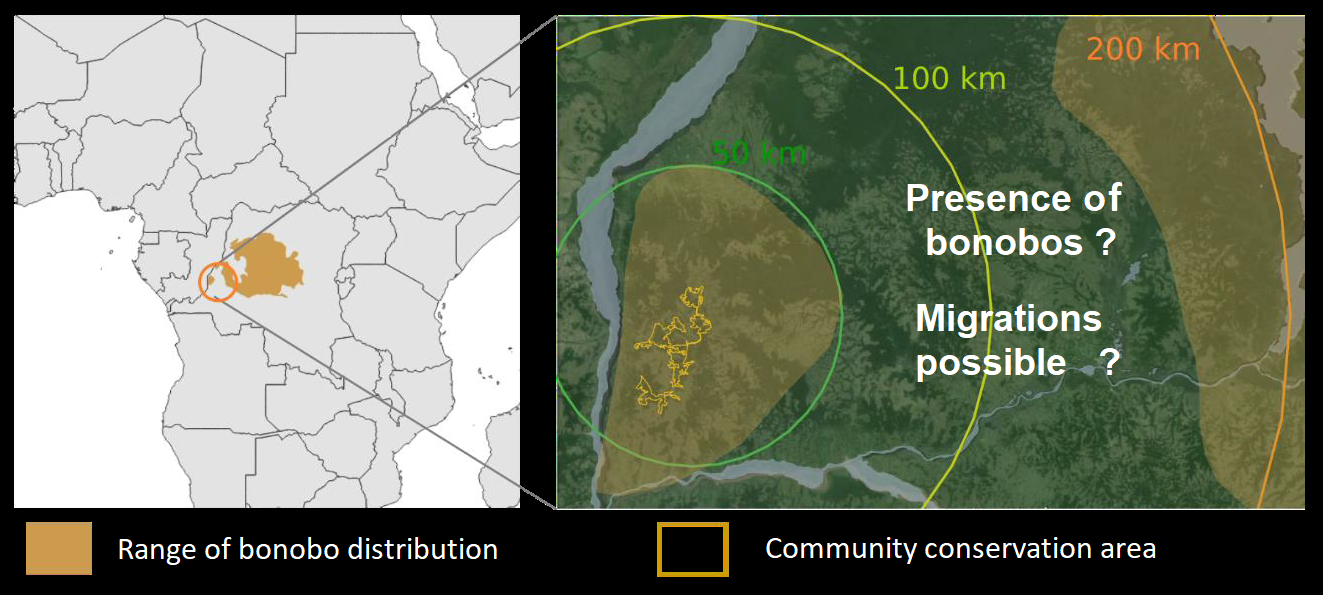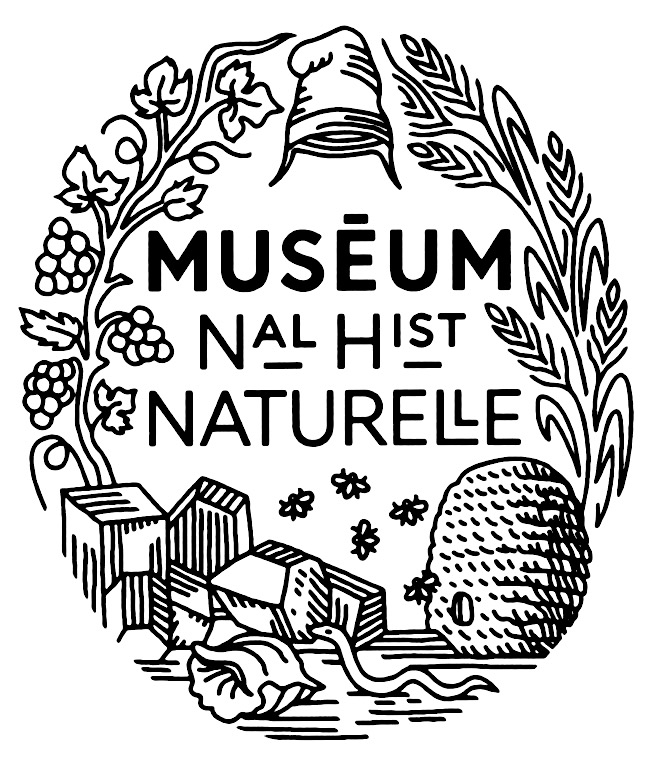
Project context and objectives
Understanding the state of isolation of the Southwestern bonobo sub-population


Isolation increases the risk of genetic drift and inbreeding, so in order to be able to best adapt conservation strategies, it is essential to have a comprehensive understanding of the state of isolation of this sub-population.
 M'bou Mon Tour: an essential partner in bonobo conservation
M'bou Mon Tour: an essential partner in bonobo conservation
-
M'bou Mon Tour (MMT) is a Congolese NGO created in 1997 that conducts activities in the Bolobo Territory, Maï-Ndombe Province.
- The association runs a forest community conservation project focused on :
- raising awareness about wildlife conservation issues
- local development of agroforestry activities compatible with these conservation objectives.
- The association runs a forest community conservation project focused on :
- The NGO’s approach is innovative and original in placing local populations right at the heart of its project.
Methods and implementation
 An investigation in three phases
An investigation in three phases
1. Identification of twenty sites of interest for the field campaigns
Within a 200 km radius of the Bolobo Territory
- Analysis of satellite images
- Continuity between pockets of forest ?
- Possibility for bonobo passage ?
- Compilation of data regarding existing bonobo presence
- Reports by institutional organisations and NGOs
- Scientific publications, informal networks etc.
2. Data collection and analysis in each of the identified sites
- Training of two teams of three people for data collection: around ten sites per team over four months of fieldwork
- Bonobo conservation awareness workshops
- Interviews
- Presence of bonobos ?
- Hunting/consumption of bonobos ?
- Local development ?
- Search for signs of the presence of bonobos
- Accompanied by local “experts” 5-10 days in the forest per site
- Bonobo nests, direct observations
- Collection of faeces for genetic analysis
3. Analysis of the data collected
- On a human level
- Practices related to bonobos
- Local development needs
- On a zoological level
- Mapping of areas of bonobo presence (and density)
- DNA extraction and genomic analysis: level of inbreeding ?
- Bonobo migration between sites ?
- Identification of migration corridors / barriers
Expected results
Result 1
Distribution of bonobos
across the Province

Species database
update
Result 2
Influence of fragmentation
on the presence of bonobos

Determination of critical fragmentation
thresholds for the species
Result 3
Barrier zones/corridors
for migration ?

Identification of priority
conservation areas
Result 4
Isolation or not
of this subpopulation ?

Determination of the viability
of the subpopulation
 Provisional budget 68,000 €
Provisional budget 68,000 €
- Field equipment : 10,000 €
- Mission and data collection campaign : 22,000 €
- On the ground coordination in the DRC : 4,000 €
- DNA extraction, transfer of samples : 7,000 €
- Genome analysis for 200 samples : 25,000 €


